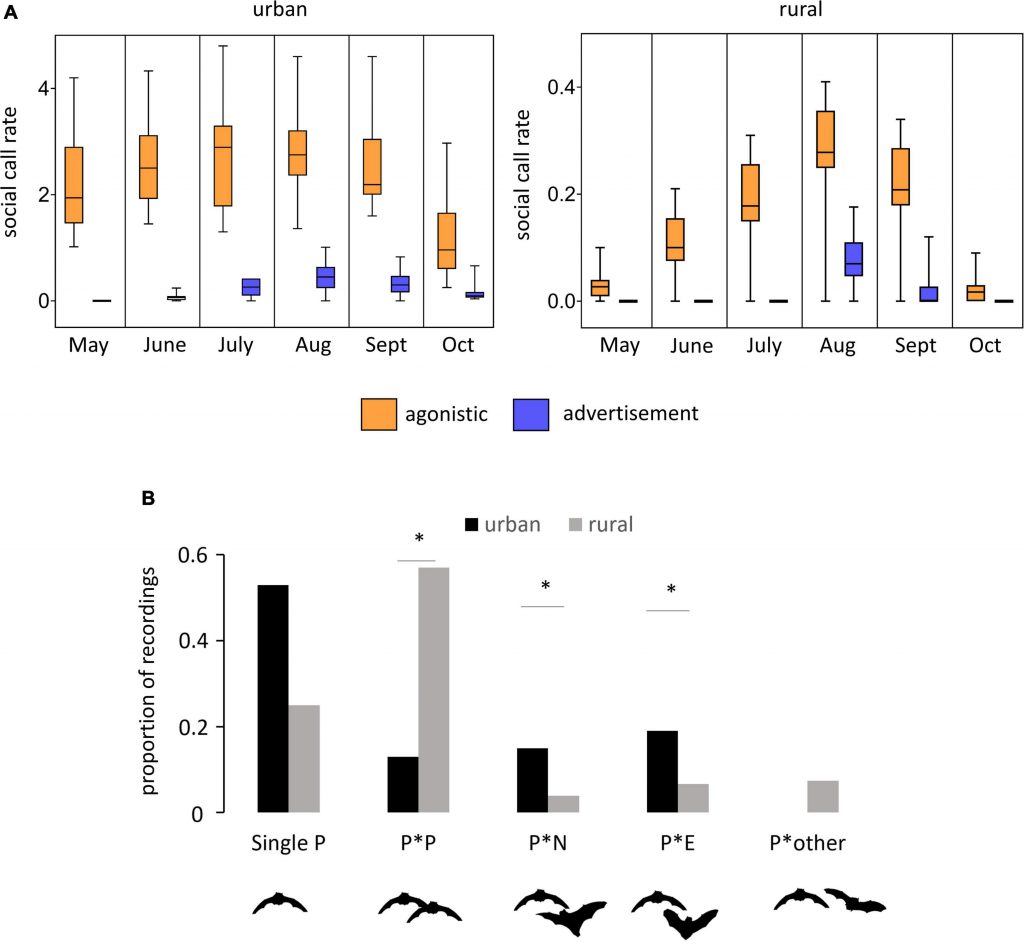Progressive urbanization is a phenomenon that can be observed worldwide and in most cases leads to a measurable change in the natural habitats of different species. In the successful adaptation of wild animals to urban conditions, certain behavioral traits presumably play an important role. Individuals who survive in urban environments exhibit different behaviors than their non-urban counterparts.
A recent study now deals with the question of what effects urbanization has on the behavior of bats. The authors of this study used automated real-time recordings to investigate and compare the acoustic call behavior of free-living bats on rural (Havelland, Brandenburg) and urban (Berlin-Centrum) green spaces in order to evaluate possible effects of urbanization on the vocalizations of bats. Using the common pipistrelle Pipistrellus pipistrellus as an example, the authors present data on the variability of echolocation and certain social sounds. The results of the study show that calls from urban areas have significantly higher end and peak frequencies compared to calls from rural areas. A similar phenomenon is already known from the bird world: certain songbird species are also able to defy the changed acoustic conditions in the city by changing their songs. In the current study on the behaviour of bats, however, the social calls recorded in urban areas also seem to be structurally more complex, as they differ significantly from the social calls received in rural areas in terms of the type and number of individual call components. The majority of the social calls of the “city bats” were probably also generated in a different context compared to the social calls of the “land bats”: While the former hunted alone over their entire period of activity from May to October and defended their food against other species also native to the city (broad-winged bat, great evening swift) by means of their social sounds, the social sounds of the “land bats” were apparently more likely to be in Presence of conspecifics and primarily emitted at times of increased insect availability in the summer months of July to September, which rather indicates a group hunting behavior that occurs only at certain times.
The results of the study show that the common pipistrelle has a high plasticity with regard to its acoustic behavior, which obviously allows it to cope with the restrictions imposed by urban conditions (esp. noise) and thus gives it great advantages in the settlement of urban space; so it is not surprising that this species is one of the most common in urban areas nationwide. The authors conclude that the degree of plasticity of acoustic behavior plays a crucial role in the overall ecological adaptation of insectivorous bats to urban habitats .

Starik, N., & Göttert, T. (2022). Bats adjust echolocation and social call design as a response to urban environments. Frontiers in Ecology and Evolution, 10:939408.
doi: 10.3389/fevo.2022.939408
